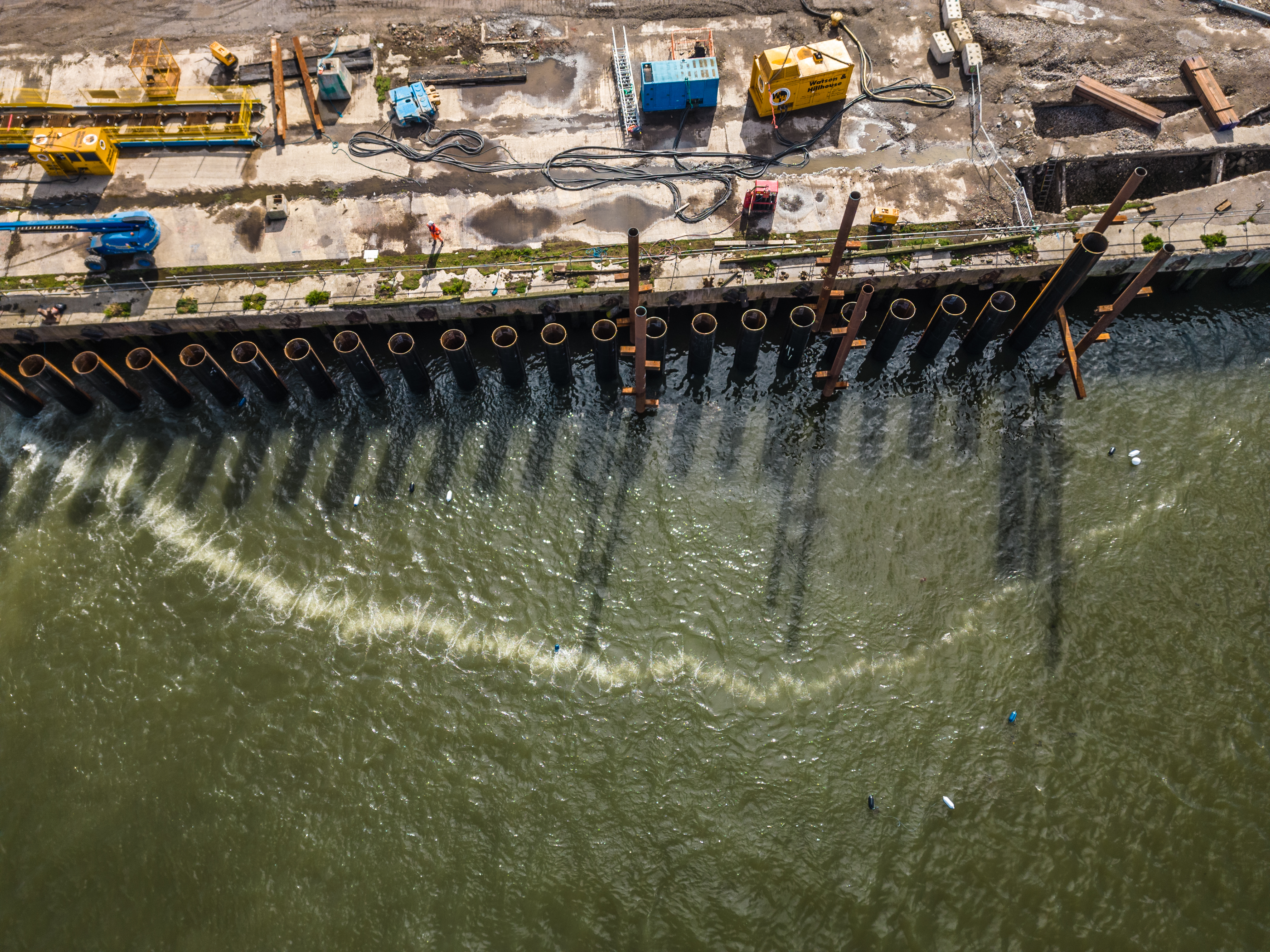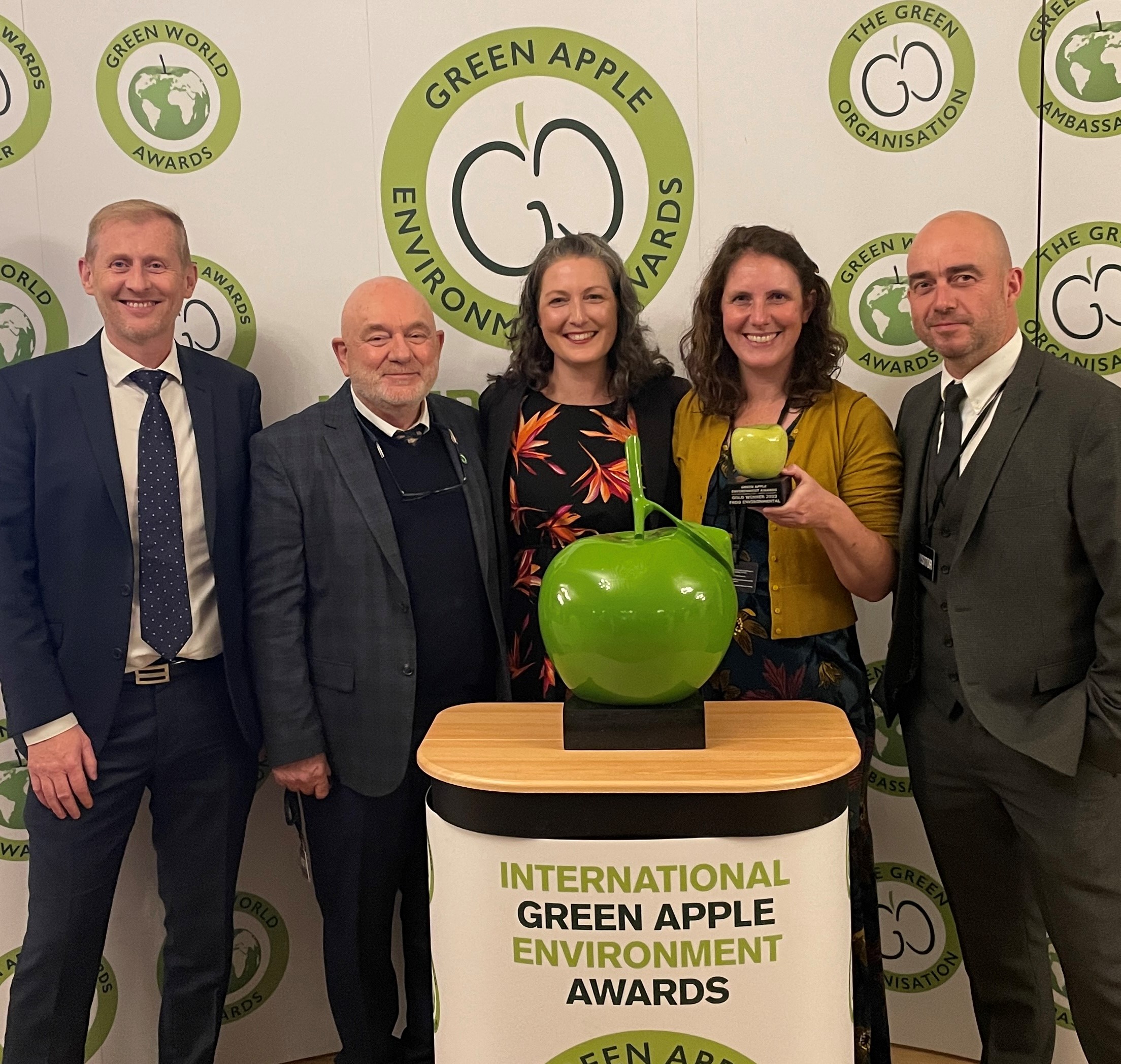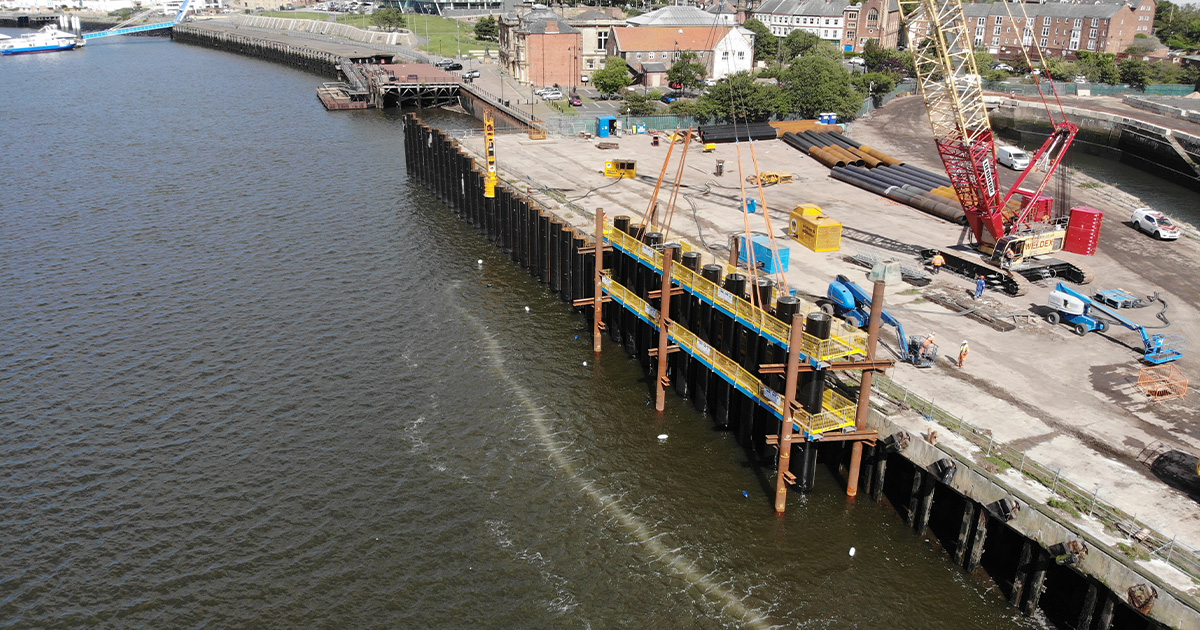The creation of a new river wall as part of the £20 million Tyne docklands redevelopment is nearing completion with the work supported by an innovative new technology that protects marine and river life.
The River Tyne is the UK’s most important river for Atlantic salmon and was singled out by the Environment Agency in 2019 as the only river in England in which the salmon population is not at risk of falling below sustainable levels.
A bubble curtain the length of a football pitch—91 m—was placed around the work to limit the underwater noise to meet environmental regulations. This enabled contractor John F Hunt Regeneration to continue work without affecting the salmon migration. The technology was provided by RSK Group joint venture company Frog Environmental. Its deployment for noise reduction during piling – driving cylindrical steel or concrete pile foundations deep into the ground—is a UK first and has earned the project an International Gold Green Apple Environment Award for Environmental Best Practice.
 (Image credit: LCM Media)
(Image credit: LCM Media)
Frog Environmental Technical Director Leela O’Dea said: “Up until now, the only responsible way to structure project work during salmon migration seasons was to carefully plan your works to avoid this period. From March until November, it was not an option to carry out piling work for up to seven hours a day, so depending on what time those tides fell, whole working days could be lost. By using this bubble curtain, the noise of the work is significantly dampened and reduced, so the salmon aren’t stressed, or worse yet, killed as a consequence. In effect, it becomes background noise. This allows work to continue even during formerly limited periods.”
A bubble curtain is a simple yet innovative solution to help with water quality and environmental protection. Made of a linear perforated hose, which is operated by a small air compressor, it creates a constant flow of bubbles across the entire body of water, which can be used for aeration and can act as a barrier around an area or to contain a pollutant.
Water-based construction projects can benefit from the bubble curtain’s ability to reduce underwater noise pollution or silt movement. The curtain can be used for environmental initiatives, such as aeration, or to create bubble barriers to prevent oil spills, litter, or algae or for deflecting jellyfish and fish from areas.
It can be used in both freshwater and marine environments for temporary works or as permanent infrastructure. It lies dormant on the floor of the waterbody until it needs to be activated.
John F Hunt Regeneration Manager for Marine and Civils Dave McLaren said: “We couldn’t believe the results. There was a staggering 99% reduction in noise from the impact piling when the curtain was in operation—well below the danger level for salmon. We used it last year and it has saved us tens of thousands of pounds and sped up our timeframe for completion by a full week. We’ll definitely be using it again on other projects.”
 Pictured left to right: John F Hunt Regeneration General Manager Simon Skentelbery with Green Apple Awards host Phil Williams, Frog Environmental Associate Director Felicity McClintock and Technical Director Leela O’Dea, John F Hunt Regeneration Site Manager David McLaren. (Image credit: LCM Media)
Pictured left to right: John F Hunt Regeneration General Manager Simon Skentelbery with Green Apple Awards host Phil Williams, Frog Environmental Associate Director Felicity McClintock and Technical Director Leela O’Dea, John F Hunt Regeneration Site Manager David McLaren. (Image credit: LCM Media)
According to South Tyneside Council, the Holborn area has been largely derelict for years, and the remediation of disused drydocks at East Holborn and conversion into a riverside quarter for living and working is part of a larger mixed-use development. Along with the new quay wall and the restoration of three derelict docks, the site will be regraded to protect against flooding and remediated to deal with past industrial contamination, to turn former industrial land into a desirable location for residents and visitors.
The council estimates the scheme will be finished in spring 2024, although John F Hunt Regeneration will complete the new quay wall by the end of this year.



